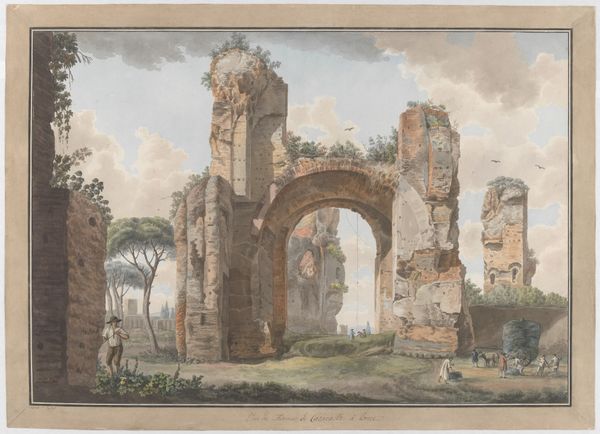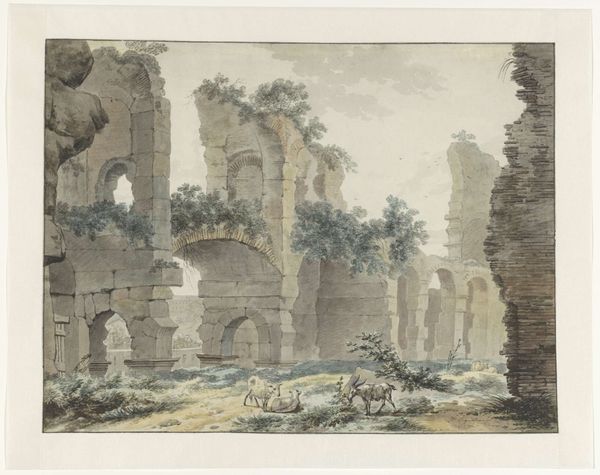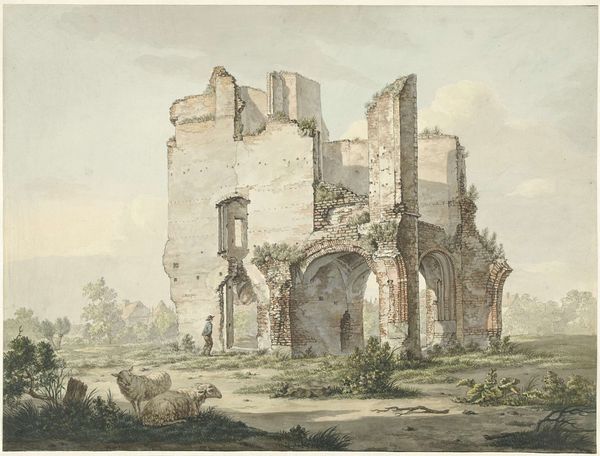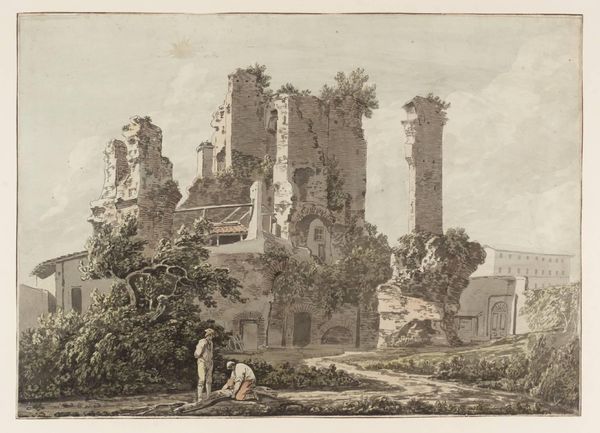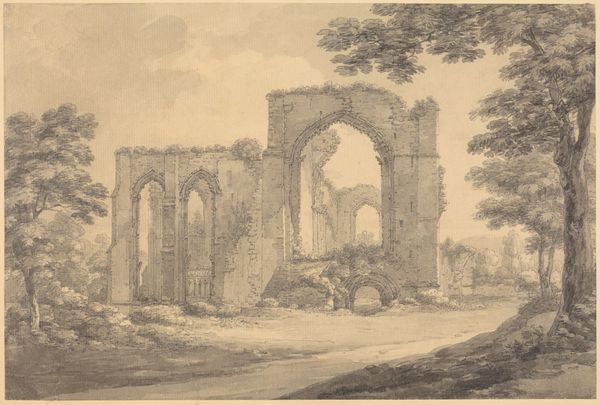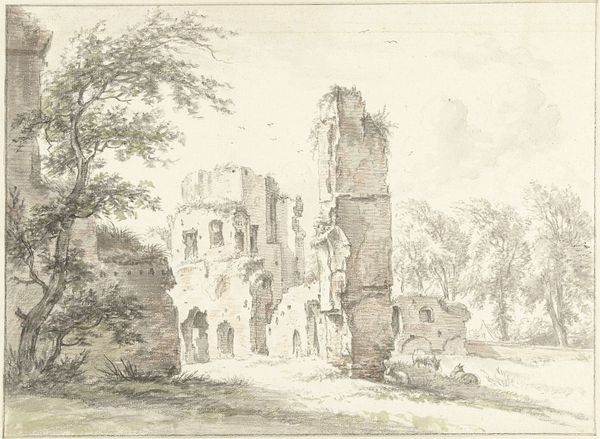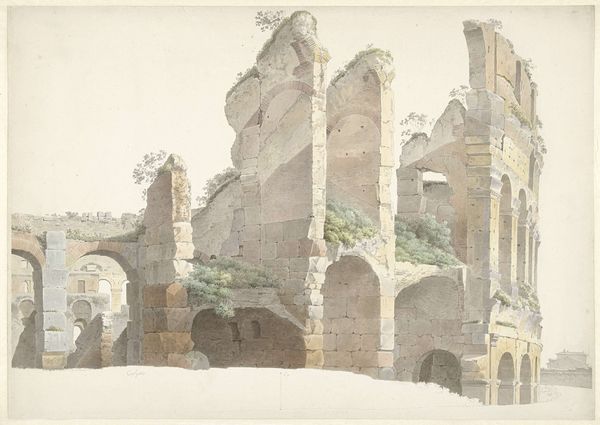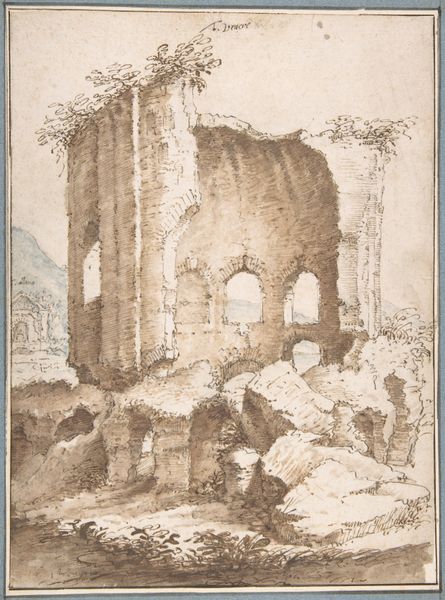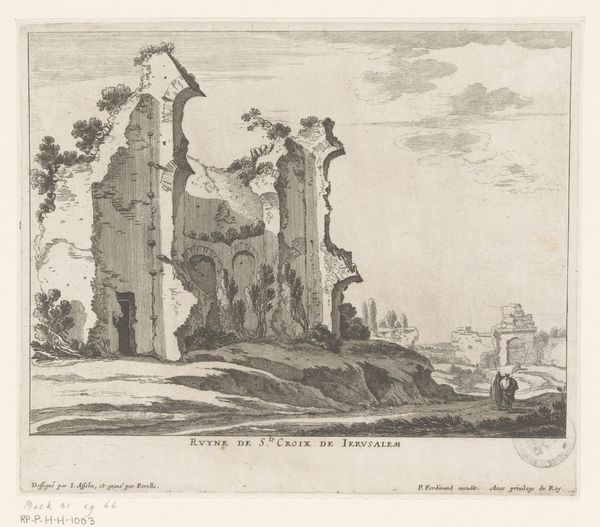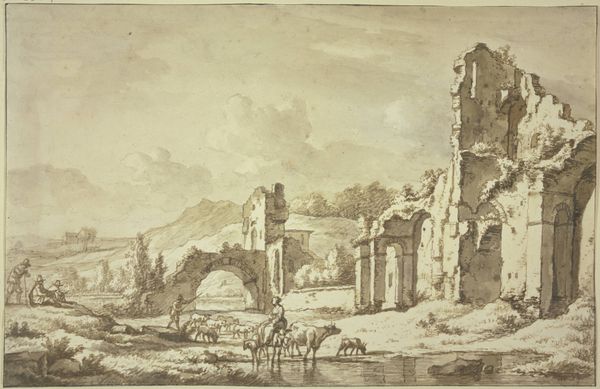
Römische Ruinen mit Tonnengewölbe_ die Bäder des Caracalla 1788
0:00
0:00
drawing, coloured-pencil, paper, watercolor, ink, architecture
#
drawing
#
coloured-pencil
#
landscape
#
paper
#
watercolor
#
ink
#
coloured pencil
#
classicism
#
watercolor
#
architecture
Copyright: Public Domain
Curator: This evocative rendering, titled "Römische Ruinen mit Tonnengewölbe_ die Bäder des Caracalla," or "Roman Ruins with Barrel Vault_ the Baths of Caracalla", comes to us from Maximilian von Verschaffelt, dating back to 1788. Editor: The delicate wash immediately evokes a sense of melancholic grandeur. The cool tones really accentuate the massiveness and, perhaps, the ephemerality of it all. Curator: Indeed. It is difficult to see a picture of ruins without a sense of loss. The architectural drawing, skillfully rendered with watercolor, ink, and coloured pencil on paper, gives a certain insight to the politics of memory embedded in neoclassicism, right? Think about the context in which it was created. There's an inherent commentary on power, the transience of empires, and the picturesque beauty found even in decay. Editor: You are absolutely correct to touch on this picturesque mode. What truly captures my attention, though, is the contrast between the precision in depicting architectural structure and the almost dreamlike quality imparted by the watercolour technique. Notice how the structural elements – the arches and vaults – display strong geometries while the colours remain muted, ethereal? Curator: Precisely, it underscores how artists, embedded within their era’s social, cultural, and ideological landscape, reinterpret and engage with legacies from times past. This isn't a simple landscape; it is an allegorical comment. Editor: And on the allegory of time! Speaking of allegory, have a look at how the light seems to penetrate the very stone, subtly redefining and softening the firm architectural lines! The overall effect of a space marked by time, by light. Curator: An observation which neatly complements a look at von Verschaffelt’s place in the German interpretation of classicism, an era wrestling with self-perception. These themes echo contemporary dialogues on colonialism, the role of monuments, and the narrative shaping power inherent to aesthetic representations of history. Editor: True. Ultimately, as our perspective broadens to consider not only light and shadow, we gain a further appreciation of its artful synthesis, in the handling of watercolour on paper, the ruins standing as proof that, despite decay, beauty and structure can remain.
Comments
No comments
Be the first to comment and join the conversation on the ultimate creative platform.
